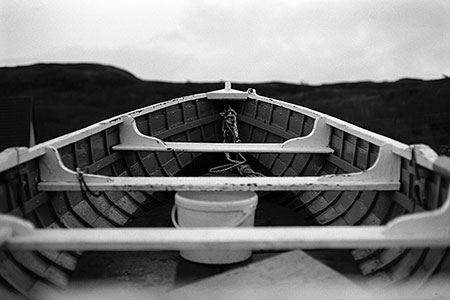Posted by Karl Zipser on January 18th, 2007

Red gauche on paper
Let’s for a moment accept the proposition that children artists can be considered “real artists.” What an odd type of artist a child makes, if you think about it. What a short career a child has as an artist, always in transition. Who could be worse at writing an artist’s statement than a child?
Please look at the painting above and ask yourself, what does it depict? I have looked at this artwork many times and I always have had more or less the same interpretation of the content. But what was the artist’s intention? Are our views similar? Why don’t I ask the artist? In fact, I am the artist. I painted this sometime during the early 1970’s, but I have no memory of doing so. I have no idea what I intended. I somehow doubt that my interpretation of the picture (which I remember from later in my childhood) is in fact what I was thinking when I painted it.
The painting is framed behind glass, which makes it difficult to photograph. My mother made frames for many of my sister’s and my artworks, without which they would certainly have been lost. Children’s art was the main artwork in our house when I was growing up. If it were not for this early encouragement, I probably would not have become an artist.
Do you frame your children’s art? Do you ever think of the long-term implications of doing so (or not doing so)?
. . .
[Update]
I enjoyed reading the different interpretations of this painting by Sunil, Steve, Rex, Leslie, June, and Birgit. I never had the idea of a giant figure on the right before, but Sunil’s comment made me look at the picture in a different way. An area of agreement is that the picture shows a man. I would really like to know what I thought I was doing when I made this.
I’ve been thinking about this picture a lot, about the role of the “artist.” Here is what I think: my mother’s role in this picture was something like that of a photographer. She didn’t “make” the image by hand, but she created the conditions for it to be made. Presumably it was one of many paintings. She selected this one, framed it and saved it. I think she chose this image for a reason, because it is a compelling. She could also have made a compelling photograph of a pattern of clouds in the sky that looked a lot like a man on a dock or a boat, or what have you. I think my role as a three or four year old painter is completely accidental.
Is children’s art art? It seems to me that it can be, but a parent or some adult has an important role to play in making it art — selecting what is good and presenting it as art.
[UPDATE 2]
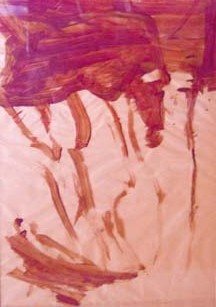
Posted by Hanneke van Oosterhout on January 13th, 2007
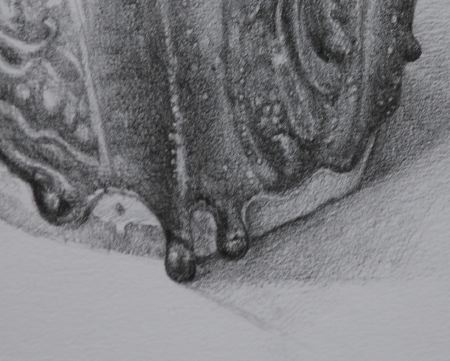
Here are the drawings I have been working on in the new year.
more… »
Posted by Birgit Zipser on January 12th, 2007
Do you see this as
Near completion?
Destruction?
This was a color photograph from northern Michigan. Inspired by the black and white photographs recently shown here, I converted it into lab color, clicked on lightness and then converted it to grey scale. Intrigued by Colin’s luscious blacks, I used the merge tool to increase the contrast a little to get a little more black. What else should I do or have done in my first attempt at processing black and white photos?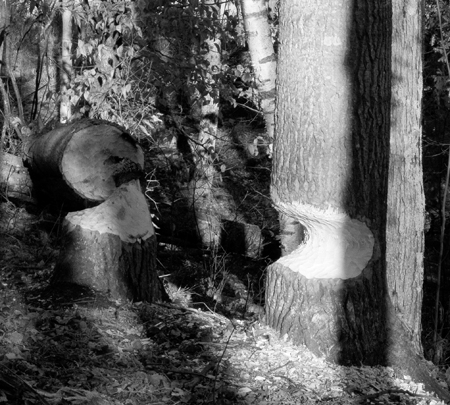
more… »
Posted by Karl Zipser on January 11th, 2007

Earlier we came to an informal consensus that children’s art is not real “art.” I don’t see that as a problem, but it makes me curious: what are children doing when they draw? To try to get some insight, I’ve been drawing together with Nino and Fran. more… »
Posted by Karl Zipser on January 10th, 2007
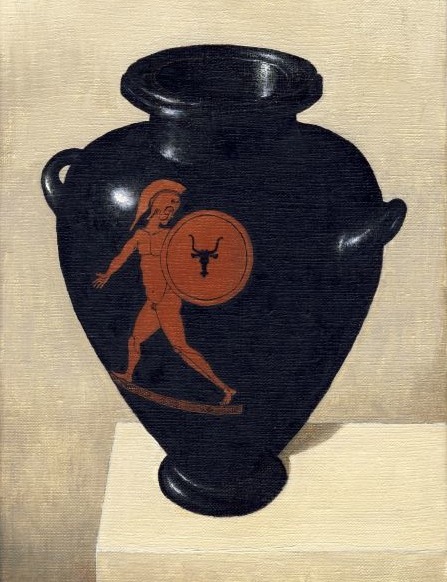
Who is the most influential art blogger? Ed Winkleman, of course. I haven’t been following his blog as closely as I would like to, but yesterday I took a look and the title of his recent post Art About Art got me excited. I’ve been working on an essay about this general subject “art about art”, and I wondered if I had been scooped. In fact, there was no connection; Winkleman’s post could have been titled “Art about making art,” how artwork depicting artists “caught in the act” of creation tells us about how artists did what they did. In my own experience this is a fruitful avenue for research, because there is much to be learned about studio practice from old paintings, (how to store brushes in linseed oil, for example, or how the palette was laid out in the 15th century). There is also much to learn from ancient art about the making, painting, and firing of ancient Greek ceramics.
Back to art about art — the concept of depicting art in art opens a lot of possibilities. The imaginary vase painting still life above is an example. I have long been fascinated by Athenian vase painting because of the potential of the vase to act as a “frame” for drawings and paintings on the vase itself. This fascination led me to a long love affair with ceramics and kiln building — that’s for another time though. The painting above is a technical study in how to paint a representation of a vase with oil colors on canvas. The form of the vase is based on studies of a stamnos in a museum in nearby Leiden, while the “red figure painting” is based on a painting on an amphora in the same museum. I studied these ancient objects by drawing in my sketchbook at the museum, then created this fantasy synthesis in my studio.
In fact, I worked out the rough form of the vase together with Hanneke van Oosterhout in a large painting we did together. I made this study to develop the technique for painting the vase before overpainting it in the large painting.
Every blog post should end with a question, right? Okay then, what do you think about Ed Winkleman’s blog? Or, what do you think about “art about art”? Or, what do you think of collaborating on artwork?
…
related post: Art about art and doing a 180
Posted by Colin Jago on January 9th, 2007
Posted by Steve Durbin on January 9th, 2007

In a recent post, Hanneke showed us a beautiful pencil drawing of three pears. In the comments, she and Karl expressed interest in comparing this drawing with a photograph. I decided to experiment along these lines, and above I’ve posted a first result (click on the image for a larger view). I plan to vary a number of factors involved in creating the image; you can help me decide what would be interesting to try.
In this first effort, I used one of Hanneke’s tricks: a dark background. The pears were ones I happened to have in the house, and are different from Hanneke’s, not as nice in shape. I used a similar arrangement to hers, with natural illumination from a nearby window. I’m not thrilled with my composition, but I didn’t take much time, and I can do a better job when I come back to this. Please give me your thoughts on things you like or don’t like about the composition.
more… »






